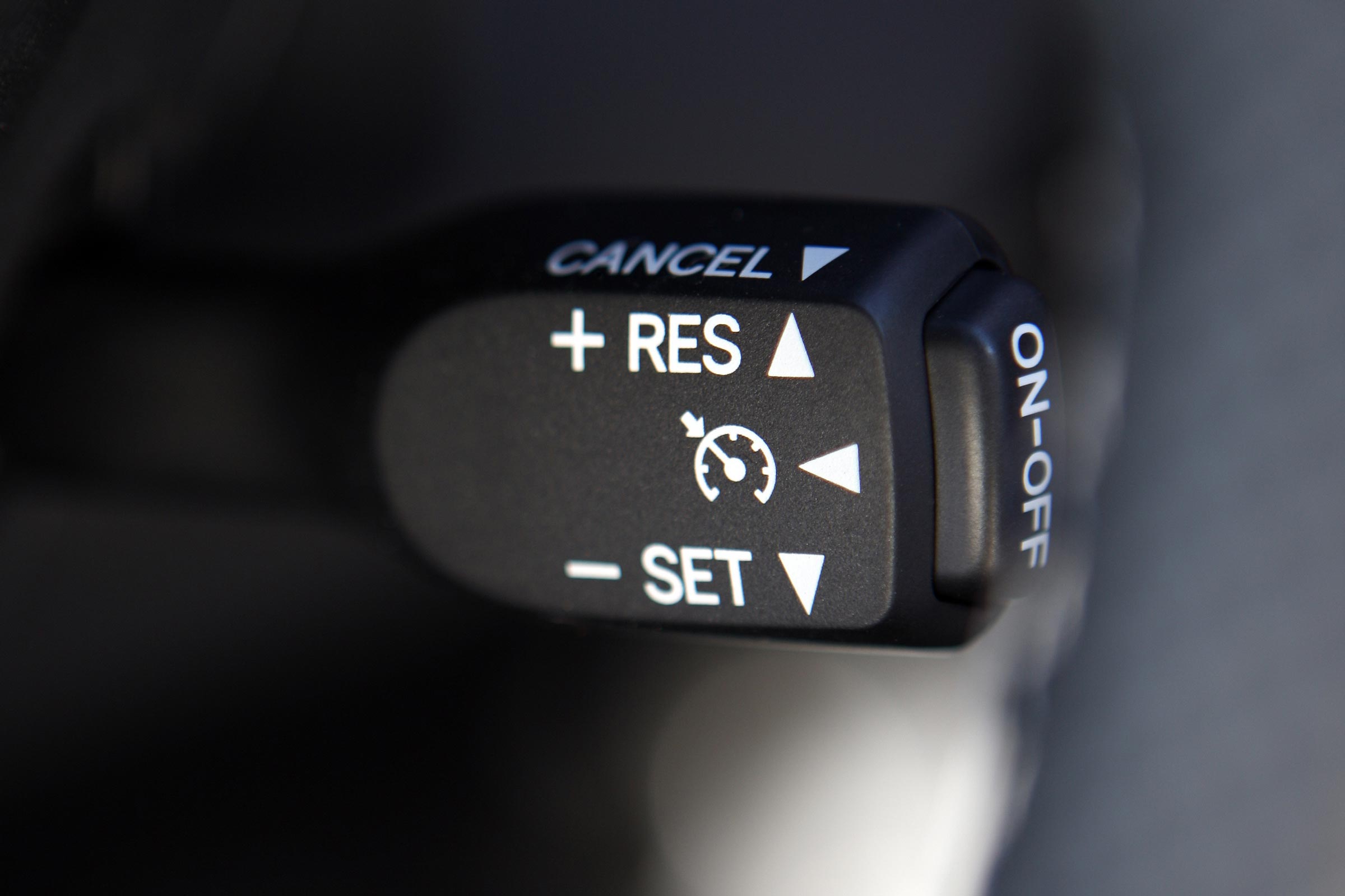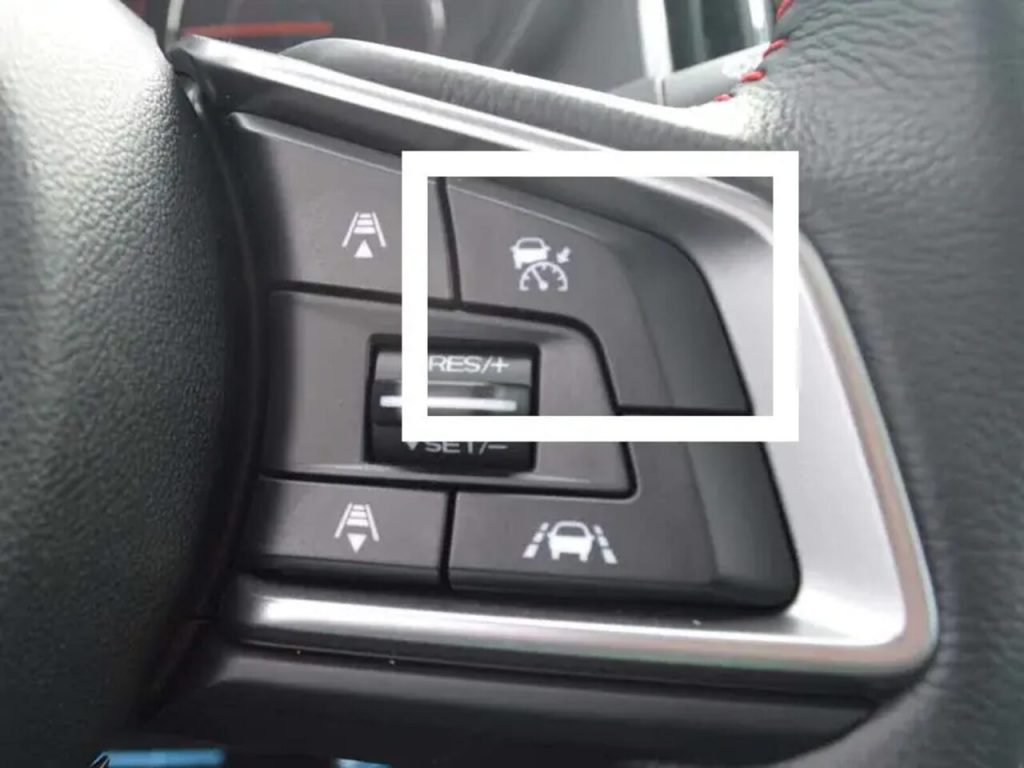Table Of Content
- EyeSight® earns "Superior" Front Crash Prevention Ratings
- Spacious Cargo Area and Wide Rear Gate
- SUBARU CROSSTREK DEBUTS WITH REFRESHED DESIGN, SUSPENSION AND AN AVAILABLE 2.5 LITER ENGINE
- Ford’s BlueCruise Remains CR’s Top-Rated Active Driving Assistance System
- Adaptive Cruise Control in Modern Subaru Vehicles Explained
- How We Rated the Systems

Despite the few technical glitches along the way, the Subaru Outback was an incredibly comfortable ride from start to finish. In fact, they drove continuously, only to stop for gas, a feat they almost never can achieve because of the normal aches and pains that accompany long-distance drives. All you'll need to worry about are keeping your eyes on the road and you can always switch this technology off once you want to resume driving as normal. It will reduce the power from the engine to help minimize the possible impact force and frontal impact damage. By contrast, Nissan/Infiniti’s confusing and poorly labeled symbols on the steering wheel make ProPILOT Assist and the updated ProPILOT Assist 2.0 unintuitive to use and hurt its “ease of use” score. Standard 18-inch alloy wheels feature a gloss black finish and give the Onyx Edition a confident and composed foundation.
EyeSight® earns "Superior" Front Crash Prevention Ratings
This is mainly because the updated version’s LCA system does a much better job of keeping the vehicle near the center of the lane, rather than allowing it to ping-pong back and forth between the lane lines. While the original system still scores last of the 17 systems we’ve tested, Highway Driving Assist 2 ranks 11th. But while BlueCruise’s capabilities are impressive and can make driving more relaxing, cars that can truly and safely drive themselves remain a long way off. The Day reports Ralph Teetor is the inventor of cruise control originally, back in 1945.
Spacious Cargo Area and Wide Rear Gate
Right now, only Ford and GM’s systems meet our criteria for earning additional points, but others could be available soon. It’s equal parts eerie and amazing to experience Ford’s BlueCruise hands-free driving feature as it takes over your car’s steering, braking, and acceleration while you travel down the highway. And when it came to the Adaptive Cruise Control feature, it was almost as if it worked too well. This is a feature that many new vehicles are including as part of its standard roster, and there’s no better way to sample its capabilities than on an open road and in real-life driving conditions.
SUBARU CROSSTREK DEBUTS WITH REFRESHED DESIGN, SUSPENSION AND AN AVAILABLE 2.5 LITER ENGINE
The Outback’s version would beep when cars were detected in front of it, but the MotorTrend critics didn’t seem to mind it. And they went on to endorse the Adaptive Cruise Control as a must-have for real-world driving environments. Subaru EyeSight is also complemented by additional technologies in some models, such as Blind-Spot Detection, Rear Cross-Traffic Alert, and Reverse Automatic Braking. These features further enhance safety, covering more aspects of driving and parking situations. EyeSight Stories chronicles the experiences of people whose lives have been changed by Subaru EyeSight.
Subaru EyeSight®: Safety is always in focus

To keep a safe distance from the car in front of you, choose the distance you want to preserve, and EyeSight will automatically adjust your speed to maintain your selected distance. This advanced system provides extra awareness, safety, and added peace of mind every time you drive. Watch the videos below to see how each component of EyeSight works together to bring you a safer road ahead. If the driver is unresponsive, however, BlueCruise merely slows the vehicle to 6 mph and continues driving in the same lane indefinitely. It doesn’t bring the car to a complete stop, put on the emergency flashers, or call for help. The specific vehicles we tested generally reflect the performance of other models within each automaker’s lineup equipped with the same systems, but there can be differences among models, model years, and packages that could affect some parameters of how the system operates.
Ford’s BlueCruise Remains CR’s Top-Rated Active Driving Assistance System
It reduces engine power when the system anticipates a frontal collision, helping to minimize potential damage and injury. This feature is particularly useful in scenarios where a driver might accidentally press the accelerator instead of the brake pedal. Lane Keep Assist can detect lane markings on the road and gently guide the vehicle back into its lane if it begins to drift without signaling.
ACC reduces the need for constant manual adjustments of speed by the driver, thus enhancing driving comfort and reducing fatigue. Conventional cruise control has been around for decades and prioritises the predetermined speed of the car set by the driver. However, EyeSight’s Adaptive Cruise Control incorporates data gathered by the stereo cameras to determine preceding vehicles and prioritises a safe following distance over speed. It’s alarming that, with the Honda and Kia systems, if a driver becomes unresponsive to warnings to put their hands on the steering wheel, the ADA systems will shut off before bringing the vehicle to a stop. This means that if the driver is distracted or medically impaired, the vehicle will just continue to roll forward—potentially off the road at speed—without any steering assistance or speed control, until it eventually rolls to a stop or runs into something. Ford’s BlueCruise sets a high standard among ADA systems, aided by an infrared camera that monitors the driver’s eyes to determine whether they are looking at the road.
All information contained at this Internet site is intended for the USA market only. For front crash prevention ratings, the Institute conducts low- and moderate-speed tests of vehicles with automatic braking systems and assigns ratings of basic, advanced or superior based on the type of system and its performance. Systems that are capable of controlling the steering and speed of a vehicle should also be designed to help the driver at moments of greatest need, such as an incapacitating health emergency or if the driver falls asleep at the wheel. The latest ADA systems are safest to use either on long highway drives or when you’re stuck in a traffic jam—situations in which they can best reduce driver fatigue and stress. On the other hand, using these systems on narrow, curvy roads or around pedestrians can be dangerous and stressful for drivers.
Subaru’s New Safety Tech - Not All Models Have It - Torque News
Subaru’s New Safety Tech - Not All Models Have It.
Posted: Sat, 09 Apr 2022 07:00:00 GMT [source]
Other times the steering-assistance remained engaged but the driver still had to intervene to keep the vehicle from crossing over a lane line. It faired much better on the highway—in fact, it almost felt like an entirely different system. Adaptive Cruise Control maintains a set speed and will automatically adjust to keep a safe distance from the car ahead. It is also capable of bringing your vehicle to a full stop and resume your settings as traffic begins to flow again. From 2020 onwards, all vehicle models will be equipped with Lane Centring Assist to help keep your vehicle within the lane while Adaptive Cruise Control is in use.
The previous version of the Hyundai/Kia/Genesis Highway Driving Assist system was dinged for its less capable steering assistance, which caused the vehicle to ping-pong back and forth between the lane lines—even though it’s intended to stay near the center of the lane. At times it also moved uncomfortably close to a vehicle in an adjacent lane, and our testers noted that occasionally the system was incapable of keeping the vehicle within the lane through curves. The updated Hyundai/Kia/Genesis system—called Highway Driving Assist 2 (evaluated on a Hyundai Ioniq 6)—performed much better thanks to its substantially improved LCA system, which no longer struggles to keep the vehicle near the center of the lane. Fisher and other safety experts say that many of them are designed in a way that may lull drivers into complacency, giving them a false impression that the car is handling everything on their behalf.

As a lead engineer making piston rings at the time, he is said to have been inspired by a federally regulated 35 mph limit during WWII. It seamlessly came to a complete stop when tested in heavy traffic conditions, too. Stop and go traffic was a breeze, but it certainly takes a little faith not to apply the brake yourself.
On the weekends, he usually switches from four wheels to two, riding one of his mountain bikes or motorcycles. We evaluated the systems in terms of how clearly they communicate in real time about when drivers should—and should not—be using the technology. We also looked at how well they "explain" themselves in instances when the system won’t engage or suddenly turns itself off.
There are several functions that Subaru adaptive cruise control performs by watching the road via cameras located above the interior rearview mirror. It’s a feature that’s designed to make you work less while behind the wheel since the system will automatically adjust your speed to maintain a safe preset distance from the vehicle in front of you. In our tests, both Mercedes-Benz and Tesla allowed the vehicle to drive down the highway hands-free for about 30 seconds before the first audible alert was given to the driver to put a hand back on the steering wheel. “That means the car could travel more than half a mile on a highway with hands off the wheel and the driver not paying attention at all—that’s a risky situation,” Funkhouser says.
The information gathered by these cameras is then processed to provide a range of safety and convenience features. BMW’s Driving Assistance Professional and GM’s Super Cruise have a driver monitoring camera that ensures the operator is looking at the road ahead when the ACC system brings the vehicle to a full stop, for up to 30 seconds. This provides the convenience of a stop-and-go feature in most traffic jam situations, without the hassle of having to re-engage ACC once traffic ahead starts moving forward again.
The camera is there as a safeguard to ensure that drivers are watching the roadway. Most of the other systems change the ACC mode to standby after the vehicle has been stopped for just a few seconds, which eliminates the benefits of using ACC in stop-and-go traffic. Today’s version is far more advanced and a far cry from the old Teeter box from the ’40s. Today’s cruise control technology harnesses digital signaling to not only regulate a constant speed but also to reduce and accelerate based on the sensing of obstructions. And it’s become a feature that automakers install as a standard across a variety of brands and models.
Sway Warning, on the other hand, monitors the vehicle’s position within the lane and warns the driver if it detects swaying or unusual lane departure, which can be signs of driver fatigue or distraction. Lane Departure and Sway Warning both activate a chime sound when your vehicle begins to drift or is too close to another lane. Select 2017 Forester, Impreza, Outback and Legacy models and future models equipped with EyeSight® also incorporate Lane Keep Assist (Steering assistance control) to minimize lane deviations. Subaru EyeSight provides adaptive cruise control which provides safe following distance.

No comments:
Post a Comment